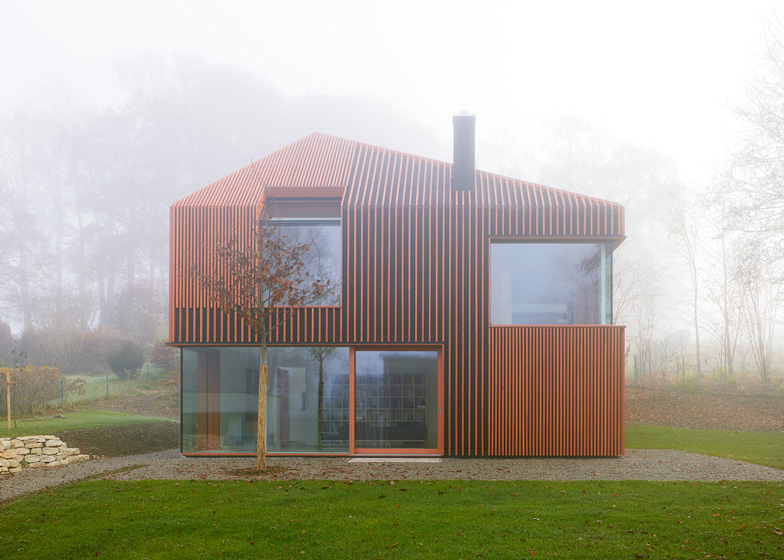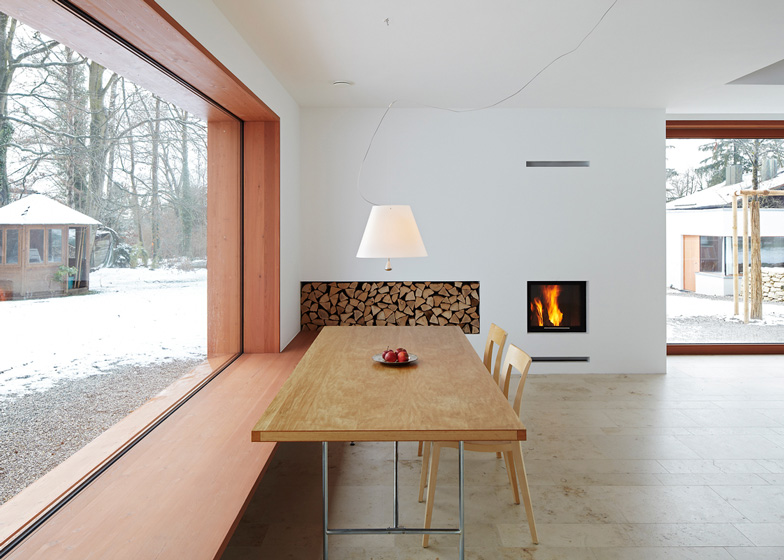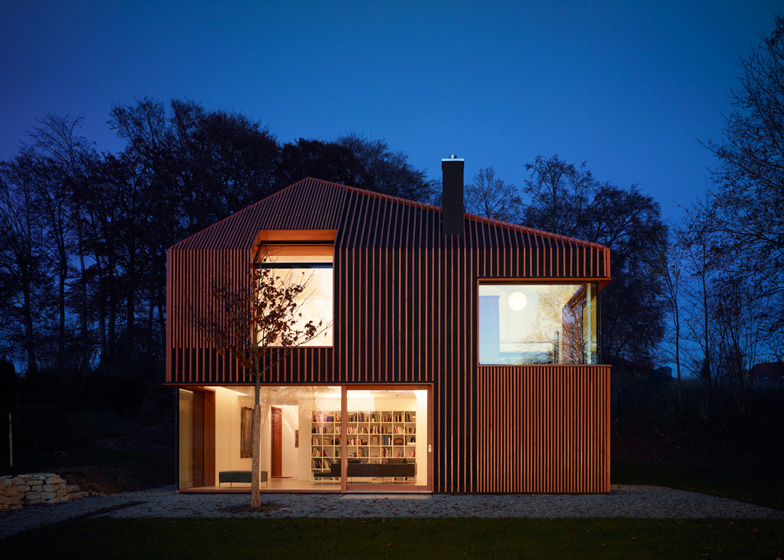Slideshow: there are no horizontal crossbeams to interrupt the vertically striped wooden batons that clad this house outside Munich by German architects Titus Bernhard.
Matching wooden slats frame the building's deep-set windows, which fold around the corners of walls as well as up over the concealed eaves.
The structure below the wooden cladding is constructed from prefabricated elements that were assembled onsite.
The name of the three-storey residence is House 11x11, which relates to its square shaped dimensions in plan.
The lowest level is an underground basement, while an open-plan living and dining room occupies the ground floor and a bedroom and two offices are located upstairs.
See more houses in Germany here.
Photography is by Jens Weber & Orla Conolly.
Here's some more information from Titus Bernhard Architekten:
House 11x11
The idea behind House 11 x 11 was to design an apparently compact house of homogenous materials, with a low external surface but as large a usable area as possible, a house that serves a family as an inhabitable sculpture and shows its exterior as an image of the inner organization.
House 11 x 11 is an icon for its users, symbolic and built with a new method of construction: the exterior walls and the wooden roof made of prefabricated elements are covered by a vertical wood-lamella façade without counter-battens, converging on the ridge of the roof.
A pronounced graphic character is the result, reinforced by the variable density and very precise setting of the lamellae, including the integration of the wooden window frames.
The inner organization expresses itself in the open-plan floor space of the ground floor, containing a kernel for secondary uses as a space continuum, connecting optically with the upper story by means of airspaces and cleverly designed lighting.






